Over the past decades, tofu has become fairly popular all over the world. In Japan, it is often enjoyed in a miso soup, or as a cold dish with some shoyu sauce – it also is a staple of many Asian food cultures. Okinawa is no exception: islanders have been making and eating their own version of this bean preparation for ages. Let’s have a look at Okinawa’s tofu culture!
Different from Japanese Tofu
Okinawan tofu (“shima-dofu”) is firmer than its Japanese counterpart, which makes it the best choice for stir-fries. It also has a stronger bean flavour, and contains on average 1.3 times more protein, thanks to a slightly different production process.
The standard unit is also much bigger: 800g, about three times that of mainland Japan. This is due to a much larger average consumption per household: a lot of Okinawan traditional home-cooked dishes contain tofu.
Did you also know that supermarkets in Okinawa sometimes sell warm tofu ? On the mainland, warm tofu cannot be sold under the Food Sanitation Law, but an exception is made in Okinawa for the sake of tradition*.
(*regulations are to be revised in June 2021. Sales of warm tofu may be reduced)
Tofus like you've never seen
While in Okinawa, look for these unique kinds of “tofu”, that you won’t find anywhere else.
▶ Jimami-dofu
Whereas tofu is usually made from soybeans, Jimami Tofu is made from peanuts. It has a puddind-like texture, with a slight sweetness. If you are allergic, pass your way!
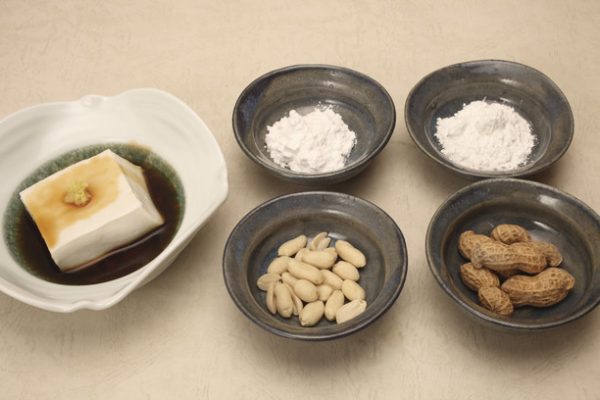
▶ Tofu-yo
Hugely popular among locals and awamori-lovers, tofu-yo can be quite confusing to first-timers. Not only does the colour look off – ranging from pale pink to bright red – but the taste is also surprisingly strong. Tofu-yo is made by fermenting regular tofu in rice malt, yeast and awamori (the local rice liquor). The taste and the texture are remarkably similar to cheese.
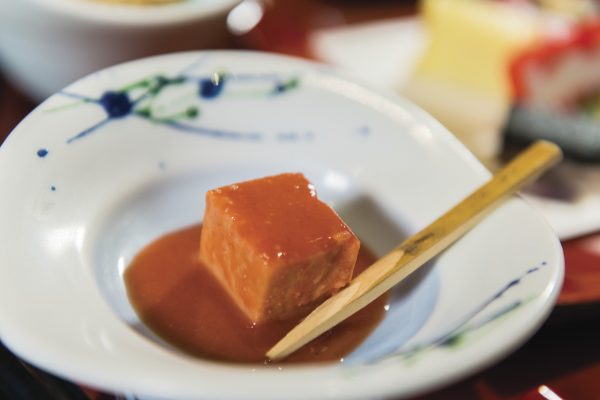
▶ Moi Tofu
Moi Tofu is made by boiling and solidifying a type of seaweed called “moi”. It has a simple taste, and a slight saltiness, faintly reminescent of the sea. It is especially popular in the northern part of the main island.
Eat your tofu like a local
How do the locals enjoy their tofu? Here are a few examples of popular dishes.
▶Yushi-dofu
Tofu is made by adding nigari (natural magnesium chloride) to soy milk, and waiting for it to coagulate. Yushi-dofu is a kind of fluffy tofu that has not yet solidified. The tofu heated in a pot with its liquid, some bonito broth, and soy sauce. Sprinkle some sliced spring onions on top and enjoy. Warm yushi-dofu is also a popular topping for Okinawa soba (noodles) soup.
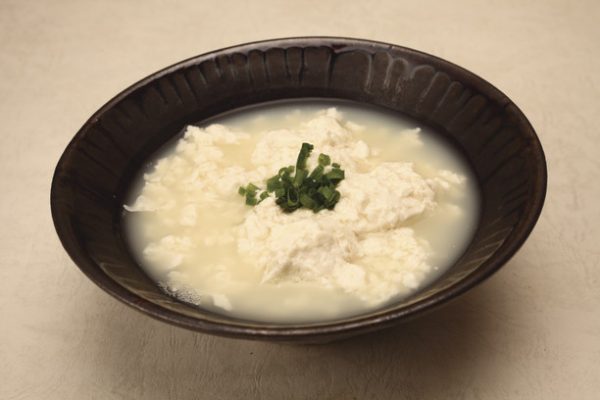
▶Champuru
Okinawan style tofu is also a key ingredient of many stir-fries, in various combinations with pork, bitter melon, or other veggies. Make sure to give them a try!
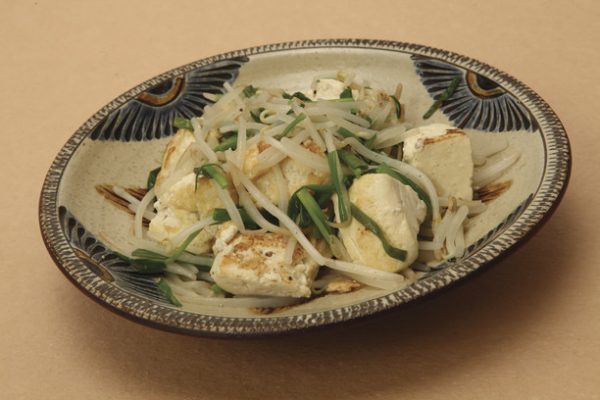
▶Sukugarasu
Sukugarasu are young aigo fish that are pickled in salt – a common way to preserve food before the advent of refrigerators. Traditionally, a single sukugarasu is served on top of cube of tofu, as a bite-sized hors d’oeuvre that pairs very well with awamori, the local rice liquor.
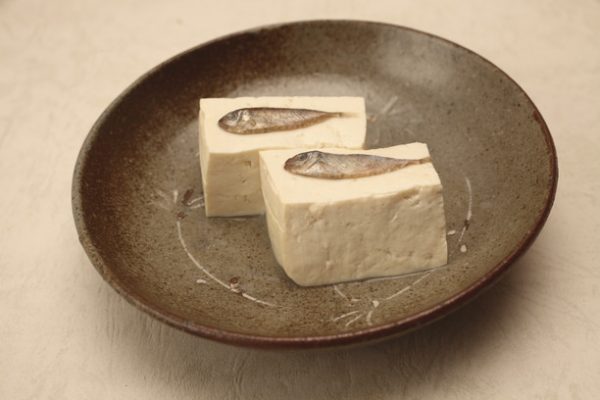
Now you know all there is to know about Okinawan tofu. It’s time to give it a try!

